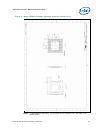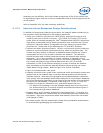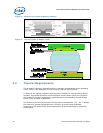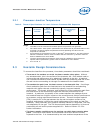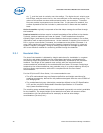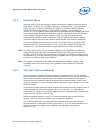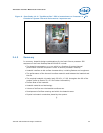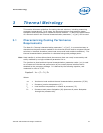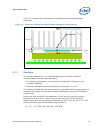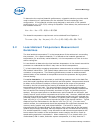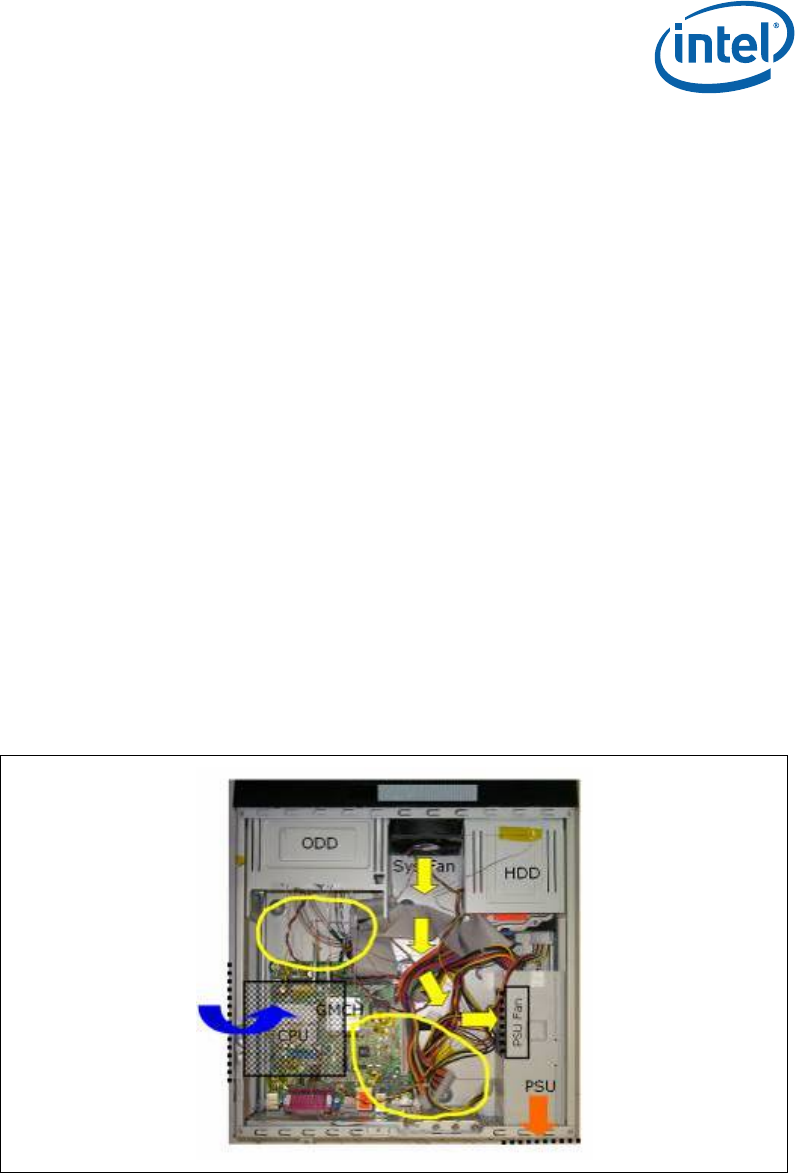
Processor Thermal/Mechanical Information
Thermal and Mechanical Design Guidelines 23
By analyzing airflow condition in an μATX chassis, a case study in Figure 6 shows that
a chassis layout is critical to components cooling in the system. The alignment of
system fan (80×80mm
2
) with power supply fan results in pass-through airflow which
bypasses the motherboard region. The cooling airflow from external environment is
not able to reach motherboard region to cool critical components on the motherboard.
Vents located at chassis top and side causes thermal gradient that induces natural
convection flow (blue arrow) for processor and MCH. Majority of regions are
dominated by natural convection or low flow eddies (yellow lines).
For a Chassis Air Guide Design Guide (Rev 1.1) compliant μATX chassis, such as in
Case Study #1, it is recommended to relocate system fan to CAG (Chassis Air Guide)
venting to provide impingement airflow to processor and MCH on motherboard as well
as improving overall airflow within chassis.
Figure 7 shows a Case Study #2 by
relocating system fan to CAG venting location for airflow improvement.
System exhaust fan located at rear side of chassis (at motherboard input/output back
panel) will effectively improve chassis thermal by exhausting hot air heated by
components on board, and regulating cool air from environment into chassis via
chassis venting.
Figure 8 shows Case Study #3 of an μATX chassis with two exhaust
fan installed for system cooling.
Additionally, mounting position and type of power supply unit with fan could assist to
improve system thermal performance.
Figure 9 shows that a “top mount fan” power
supply located next to processor is able to direct airflow to heatsink for cooling. Refer
to Power Supply Design Guide (Rev 1.1) for power supply selection.
Figure 6. Case Study #1: Top view — Poor μATX Chassis Layout Design for Intel
®
Celeron
®
Processor 200 Sequence on Intel
®
Desktop Board D201GLY2
(chassis cover removed for illustration)



